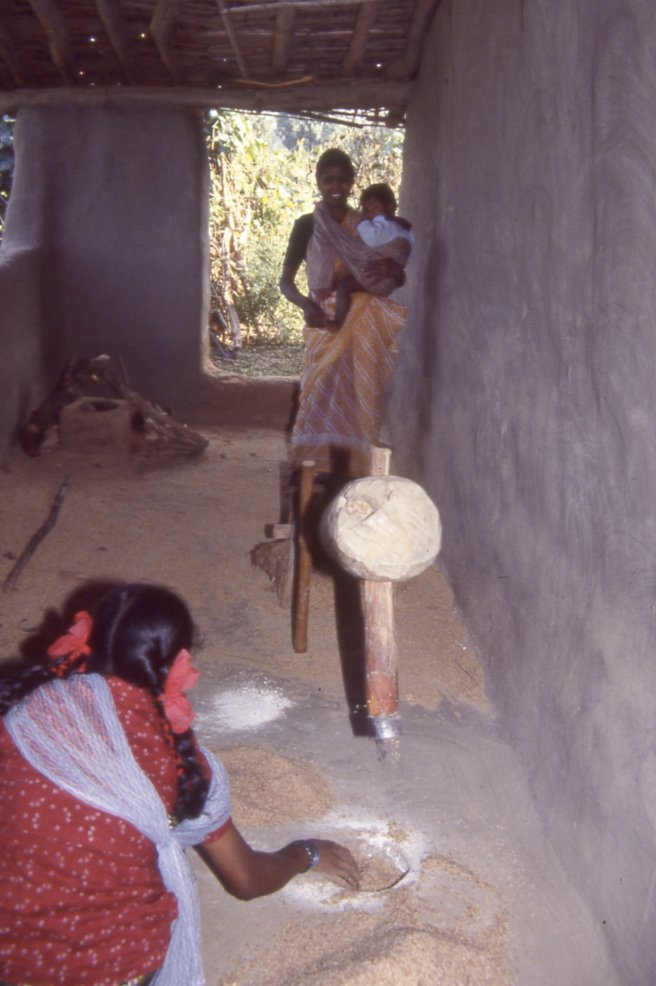
This is the traditional way of polishing rice. The dheki is a sort of lopsided seesaw. One person (two in the other picture) presses and releases the short, thin end repeatedly with their foot, and other, heavy end goes up and down, its iron hoof thumping down into a small pit with a cup (made of very a hard wood) in the bottom. The person at this end puts rice, in its husks, into the cup and pulls it out again at intervals. Their hand goes into the cup between thumps of the hoof – perfect timing at both ends is vital; serious hand injuries can result if anyone gets it wrong!
When the rice is pulled out, it has to be separated into rice that needs to go back in because it’s still got its husk, and rice that’s done. This is done using a soopa – a specially-shaped bamboo basket.
These machines are mostly falling into disuse and disrepair. There are electric or diesel rice polishing machines in most villages, and people take their rice to them and pay to have it polished. Even these are slowly disappearing, and people sell their undehusked rice to traders and buy back polished rice from the traders.
Strangely, they get a better price for the undehusked rice than they have to pay for the polished rice. I say strangely, but it’s not really strange at all: it’s a typical Indian scam. The fresh rice ends up sold to rich people, mostly in cities. There are huge rice stores, a few year’s supply for the whole country, to guard against poor harvests. The contents have to be rotated, to guard against any rice ending up so old it’s inedible. The cheap rice the villagers are getting is the stuff that’s fallen off the end of the rotation...
©Clive K Semmens 1990